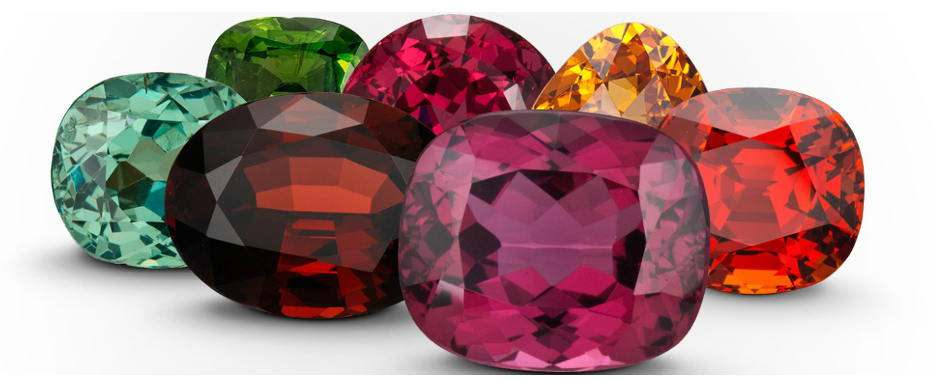
The garnet is the birthstone for January and is the traditional gift for second wedding anniversaries. They have been used in jewellery for centuries and have been found in archaeological sites the world over.
Thousands of years ago, red garnet necklaces adorned the necks of Egypt’s pharaohs, and were entombed with their mummified corpses as prized possessions for the afterlife. In ancient Rome, signet rings with carved garnets were used to stamp the wax that secured important documents.
Centuries later, in Roman scholar Pliny’s time (23 to 79 AD), red garnets were among the most widely traded gems. In the Middle Ages (about 475 to 1450 AD), red garnet was favoured by clergy and nobility.
Red garnet’s availability increased with the discovery of the famous Bohemian garnet deposits in central Europe around 1500. This source became the nucleus of a regional jewellery industry that reached its peak in the late 1800s. Many Bohemian castles and churches had magnificent interiors decorated with garnet and Bohemian garnets are famous even today.
Of course, when you think of garnets you think of the classic deep red stones we are all familiar with, but in fact they can be found in many colours, including blues and greens, though these colours are rarer and need rarer rock chemistries and conditions to form. Some stones even have colour changing properties – in candescent light they can change from green to purple before your very eyes!
Throughout time there have been many ancient traditions and legends about the garnet. In medieval times the stones were thought to cure depression, protect against bad dreams and relieve diseases of the liver as well as haemorrhages. According to legend, Noah had a finely cut, glowing garnet to illuminate the ark during those dark wet days and nights. Hebrew writers include the garnet as one of the twelve gems in Aaron’s breastplate. Christian tradition considered the blood-red garnet as a symbol of Christ’s sacrifice. The Koran holds that the garnet illuminates the Fourth Heaven of the Moslems and the Greeks believed it protected children from drowning.
There are countless beliefs regarding the various benefits of wearing garnet to promote good health. It is thought to relieve skin conditions and regulate the heart and blood. For men, it is said to keep the reproductive organs healthy and for women it is said to promote hormonal balance and reduce swelling. Sounds like a recipe for a happy marriage!
Traditional folklore creates a strong link between the red garnet and blood. It is believed that a garnet tones the spleen, promotes health throughout the circulatory system and enhances the body’s production of healthy haemoglobin. It stimulates the metabolism, treats spinal and cellular disorders, purifies and re-energises the blood, heart and lungs, and regenerates DNA.
Garnet’s virtues extend to mental health too – they include passion, true friendship, fidelity, success, self-esteem, loyalty, devotion, energy, faith, consistency and truth. And it doesn’t end there! The garnet is also believed to be extremely beneficial in the realm of business as well.
Too good to be true? There’s only one way to find out…keep your eyes peeled for some new pieces coming soon featuring this most venerable of stones!
